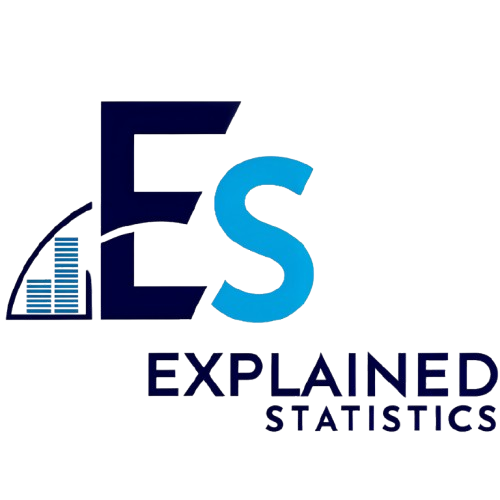Introduction
A raw score is the original score obtained from a test or observation. It’s the unaltered number that reflects a participant’s performance. For instance, if a student answers 18 out of 20 questions correctly, their raw score is 18. In statistics, this score is crucial as it serves as the foundation for more complex analyses.
Understanding raw scores is vital for anyone dealing with data. They represent the starting point for evaluating performance, enabling comparisons between individuals or groups. However, raw scores alone often lack context. They can mislead without transformation into standardized scores.
This article aims to clarify the concept of raw scores. We will cover their definition, calculation methods, applications, advantages, and limitations. By the end, you’ll have a solid grasp of how raw scores function in statistical analysis and their importance in interpreting data accurately.

What is a Raw Score?
A raw score is an original, unprocessed score from a test or measurement. It reflects the actual performance of an individual or group without any modifications. This score can also be referred to as an observed score or x-score. The beauty of raw scores lies in their simplicity; they provide a straightforward way to gauge performance.
For example, consider a standardized math test. If a student answers 23 questions correctly out of 30, their raw score is 23. This score remains consistent, regardless of the total number of questions in the test. If another student also scores 23 but on a test with 50 questions, their raw score remains 23. However, context matters. The relative performance of the two students can only be understood when looking at the total questions.
Raw scores play a significant role in statistical analysis. They are often the first step in evaluating performance across various contexts such as education, psychology, and business. In education, raw scores may indicate a student’s understanding of the material, while in psychology, they can reflect responses to assessments.
However, raw scores have limitations. They don’t account for variations in difficulty across tests or assessments. That’s where transformation into standardized scores, like z-scores, comes in handy. These transformed scores allow for meaningful comparisons and interpretations.

If you want to ensure your calculations are spot on, consider using a Raw Score Calculator. It takes the guesswork out of the equation, ensuring you get the most accurate results every time!
In summary, raw scores are essential building blocks in statistics. They provide initial insights but require careful interpretation to make informed decisions in data analysis.
How to Calculate a Raw Score
Raw Score Formula
Calculating a raw score is easy as pie! The formula you’ll need is:
X = μ + zσ
Where:
- X is the raw score.
- μ represents the mean score.
- z is the z-score, which indicates how many standard deviations a score is from the mean.
- σ denotes the standard deviation, reflecting the score variability.

This formula provides a clear way to convert a z-score back into a raw score, helping you make sense of your data. And speaking of making sense of data, if you want to dive deeper into statistics, grab a copy of Statistics for Dummies Book. It’s the perfect starting point for anyone looking to understand the basics!
Step-by-Step Calculation
Let’s break it down with some examples.
Example 1: A Student’s Test Score
Imagine a student takes a math test. The mean score of the test is 70, and the standard deviation is 10. This student has a z-score of 1.5. Let’s calculate this raw score!
Using the formula:
- Identify the mean (μ = 70).
- Find the standard deviation (σ = 10).
- Plug in the z-score (z = 1.5) into the formula:
X = 70 + (1.5 × 10)
Calculating that gives:
X = 70 + 15 = 85
So, the student’s raw score is 85. Not too shabby, right?

Example 2: Raw Scores in Different Assessments
Let’s say you’re analyzing various assessments, like quizzes and standardized tests. You might have different means and standard deviations for each.
- Quiz Example: A quiz has a mean score of 15 and a standard deviation of 3. A student’s z-score is -2. Using the formula:
X = 15 + (-2 × 3)
Calculating this gives:
X = 15 – 6 = 9
So, here, the raw score of the quiz is 9.
- Standardized Test Example: Now, consider a standardized test with a mean of 100 and a standard deviation of 15. If a student scores a z-score of 0.7, the calculation would be:
X = 100 + (0.7 × 15)
Calculating gives:
X = 100 + 10.5 = 110.5
In this case, the raw score is 110.5. This student is clearly acing it!

Practical Application
So, how can you use raw scores in the real world? Here are some handy tips:
- Educational Assessments: Use raw scores to identify student strengths and weaknesses. They help teachers understand where students excel or need extra help.
- Psychological Evaluations: In psychology, raw scores can reflect responses to assessments. They serve as a starting point for deeper analysis, helping professionals gauge mental health or cognitive abilities.
- Benchmarking: Organizations can use raw scores to track performance over time. Comparing raw scores can reveal trends, helping businesses improve their strategies.
- Standardization: When raw scores are converted to standardized scores, they allow for fair comparisons across different tests or assessments. This is crucial for accurate evaluations.
Using raw scores effectively can enhance understanding and promote better decision-making in various fields. So, the next time you encounter a raw score, remember it’s not just a number; it’s a valuable insight into performance!

Discussion on Standard Deviation
Relationship Between Raw Scores and Standard Deviation
Standard deviation is a measure of how spread out numbers are in a data set. It tells you how much individual data points differ from the mean. Raw scores, on the other hand, are the initial, unprocessed scores collected from tests or observations. Essentially, they represent the raw data before any statistical magic happens.
Now, how does standard deviation relate to these raw scores? A low standard deviation means that most raw scores are clustered closely around the mean. Imagine a group of students taking a math test. If their scores are mostly between 85 and 90, you have a low standard deviation. This close clustering indicates that the test was fairly easy or that the students performed similarly.
Conversely, a high standard deviation indicates that the raw scores are more spread out. Picture a different group of students where scores range from 50 to 100. This wide spread signifies diverse performance levels, perhaps due to varying mastery of the material or significant differences in test difficulty.
When interpreting raw scores, awareness of standard deviation is crucial. For instance, a raw score of 75 might seem average. However, if the standard deviation is low, you can conclude that most students scored similarly. If the standard deviation is high, that score may indicate significantly lower performance compared to others. Context matters!

If you’re looking for an easy way to calculate the standard deviation, check out the Standard Deviation Calculator. It’s user-friendly and takes the hassle out of the math!
Calculation of Standard Deviation
Calculating standard deviation involves a few straightforward steps. First, gather your raw scores and find the mean. The formula for standard deviation is:
σ = √(Σ(x_i – μ)² / N)
Where:
- σ is the standard deviation,
- x_i represents each raw score,
- μ is the mean of the scores,
- N is the number of scores.

Let’s break this down with a practical example. Suppose we have the following raw scores from a math test: 70, 75, 80, 85, and 90.
- Calculate the mean (μ):
- Calculate each score’s deviation from the mean and square it:
- For 70: (70 – 80)² = 100
- For 75: (75 – 80)² = 25
- For 80: (80 – 80)² = 0
- For 85: (85 – 80)² = 25
- For 90: (90 – 80)² = 100
- Sum the squared deviations:
- Divide by the number of scores (N):
- Take the square root:
μ = (70 + 75 + 80 + 85 + 90) / 5 = 400 / 5 = 80
Σ(x_i – μ)² = 100 + 25 + 0 + 25 + 100 = 250
250 / 5 = 50
σ = √50 ≈ 7.07
So, the standard deviation of this set of raw scores is approximately 7.07. This number gives us insight into how much the scores vary around the average score of 80.
Understanding standard deviation enhances our ability to interpret raw scores effectively. It adds depth to our insights, transforming numbers into meaningful information about performance and distribution.

Applications of Raw Scores
Raw scores play a pivotal role in various fields, serving as the backbone for performance evaluations and analyses.
In education, raw scores are essential for grading and assessments. Teachers use them to gauge student understanding and mastery of subjects. For example, a student’s raw score on a math test directly reflects their grasp of the material. However, it serves as a starting point for further analyses, like converting to percentage scores or standardized scores.
In psychology, raw scores appear in test assessments. Psychologists use raw scores from psychological tests to measure traits or abilities. These scores provide initial insights into a client’s cognitive or emotional state but often need transformation into standardized scores for comparative purposes.
Businesses also leverage raw scores, particularly in customer satisfaction surveys. When customers rate their experiences, those raw scores help companies gauge service quality. Calculating the average score reveals overall satisfaction, while analyzing variability through standard deviation can highlight areas needing improvement.
Moreover, raw scores form the foundation for further statistical analyses, such as z-scores or t-scores. These transformed scores contextualize raw data, enabling meaningful comparisons across different tests or groups. For example, a z-score can show how a student’s performance compares to the average of their peers, providing clarity in interpreting raw scores.

In summary, raw scores are indispensable across sectors. They provide critical data for evaluation, comparison, and decision-making, illustrating their versatility and importance in statistical analyses.
If you’re looking to enhance your understanding of data science, consider checking out Data Science for Dummies Book. It’s an excellent resource for anyone looking to dive into the world of data!
Advantages and Limitations of Raw Scores
Advantages
Raw scores are like the bread and butter of statistics. They come with several perks that make them invaluable. First off, their simplicity is a major win. You get a straightforward number that reflects performance without needing a PhD to interpret it. Want to know how a student did on a test? Just look at their raw score! It’s as easy as pie.
Secondly, raw scores provide initial insights into data. They allow educators, psychologists, and researchers to quickly assess performance. A teacher can glance at raw scores to identify students who might need extra help. Similarly, psychologists can use them to gauge responses in various assessments. Raw scores set the stage for more detailed analysis, making them a vital first step.
Furthermore, using raw scores can save time. Instead of crunching through complex calculations, you can focus on what truly matters—understanding the data trends. They act as a quick reference point, giving you a snapshot of performance before diving deeper into the statistics pool.

Limitations
However, raw scores aren’t without their flaws. One of the biggest drawbacks is their lack of context. A raw score alone doesn’t tell you much about its significance. For instance, scoring 75 on a test means different things depending on the total score or the test’s difficulty. Without additional context, interpretation can be misleading.
Additionally, raw scores often require transformation for meaningful comparisons. Enter the world of standard scores, such as z-scores. These conversions help put raw scores into perspective, allowing for fair comparisons across different tests or groups. For example, a raw score of 80 might seem impressive, but without knowing the average score and standard deviation, it could be misleading.
In summary, while raw scores are accessible and useful for initial assessments, they need context and transformation to provide a complete picture. Understanding both their advantages and limitations can enhance how we interpret performance data.

Conclusion
Understanding raw scores is crucial in statistical analysis. They serve as the foundation for interpreting data across various fields, from education to psychology and beyond. Raw scores provide an immediate snapshot of performance but require careful consideration for deeper insights.
As we explored, raw scores come with their perks, like simplicity and initial insights. However, their limitations—primarily the lack of context and need for transformation—cannot be overlooked. To truly harness the power of raw scores, it’s essential to recognize when to transition to standard scores for a more accurate comparison.
Whether you’re an educator, psychologist, or data enthusiast, knowing how to interpret raw scores will enhance your analysis. So, the next time you encounter a raw score, remember its potential and its pitfalls. Embrace the data, and use your newfound knowledge to inform your decisions in your respective field. Happy analyzing!

FAQs
Please let us know what you think about our content by leaving a comment down below!
Thank you for reading till here 🙂
References
1. Tutorialspoint. (n.d.). Raw Score: Definition & Explanation. Retrieved from Tutorialspoint.
2. Omnicalculator. (n.d.). Raw Score Calculator. Retrieved from Omnicalculator.
3. Statistics How To. (n.d.). What is a Raw Score? Retrieved from Statistics How To.
4. UAB School of Medicine. (n.d.). Raw Scores, T-Scores & Ranking. Retrieved from UAB.
For a deeper understanding of how raw scores fit into the broader context of statistical analysis, check out this article on an introduction to statistical learning with python book length.
Understanding the differences in data interpretation is crucial. Learn more about inferential statistics vs descriptive statistics in data interpretation.
For a comprehensive guide on hypothesis testing, refer to our statistics hypothesis testing cheat sheet.
To understand the key differences between practical significance and statistical significance, check out this article on practical significance versus statistical significance.
All images from Pexels




